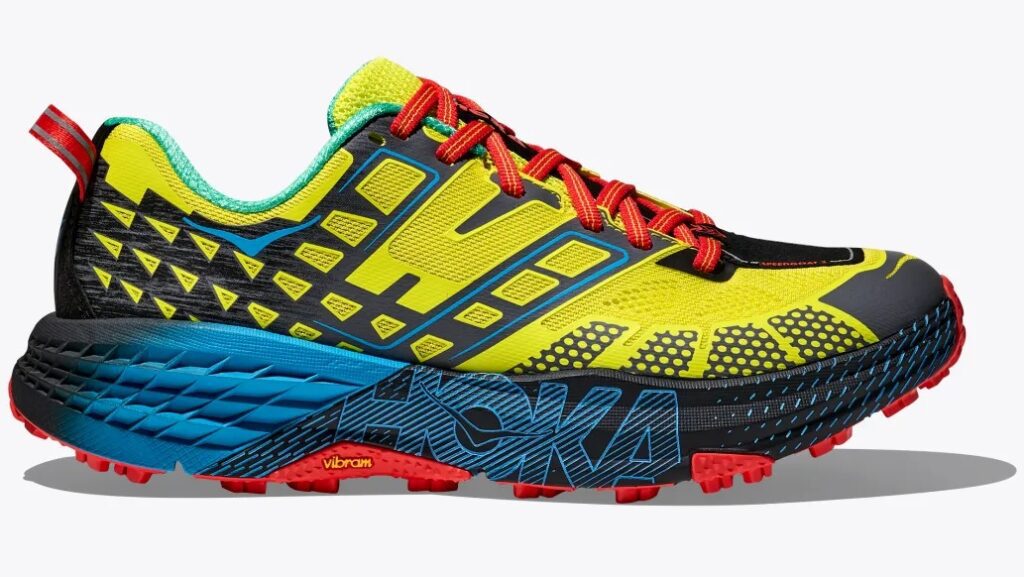In 2017, significant accomplishments in the ultrarunning community highlighted the trajectory of the sport. Kilian Jornet’s dual summits of Mount Everest within a week and Courtney Dauwalter’s outright victory at the Moab 240 Mile demonstrated the limits of human endurance in extreme conditions. During this time, Hoka One One also made a notable impact with the introduction of the Speedgoat 2, a shoe that has become a stalwart choice for serious trail runners.
The Speedgoat 2 was initially launched as an improvement over its predecessor, responding to feedback from athletes about fit and performance. Named after Karl “Speedgoat” Meltzer, a prominent figure in ultrarunning with an impressive record of 38 wins in 100-mile races, the shoe reflects a blend of functionality and durability aimed at enhancing the performance of serious runners tackling varying terrains. Its broader toebox, engineered mesh upper, and high-stack midsole provided a balance of comfort and energy return. The performance of its Vibram Megagrip outsole, noted for excellent traction, remains relevant even in contemporary models like the Speedgoat 6. Runners appreciated how the Speedgoat 2 aligned with the demands of both short and long-distance races.
Despite its nostalgia factor, Hoka’s reintroduction of the Speedgoat 2 maintains key design elements from the original model, including the same logo styling, while also showcasing new colorways. The decision to bring this shoe back revolves mainly around sentimentality rather than relative superiority over current iterations. The Speedgoat 6 has seen refinements that render it lighter and more efficient, with enhanced grip and a firmer midsole, allowing serious runners to further optimize their performance.
Assessing gear for upcoming races requires an understanding of how such innovations directly impact reliability and weight. As athletes prepare for major events like the UTMB or any mountain ultra, they must evaluate their equipment not just for aesthetics but for performance under race conditions. The Speedgoat 2 serves as a reminder of how crucial fit and comfort are, particularly in the context of long, arduous climbs and technical descents. The shoe’s design considerations can play a significant role in managing energy expenditure and minimizing injury risk over race distances that often exceed 100 miles.
As you prepare for races, consider how the nuances of footwear technology, particularly in shoes like the Speedgoat, can influence your race strategy. Traction and comfort should be paramount, especially when navigating unpredictable terrain and altitude variations. Take note of how many top-tier athletes like Meltzer emphasize the importance of feeling secure in your gear during competitive settings. The blend of comfort and responsiveness offered by shoes that have undergone multiple iterations can aid in making informed footwear choices reflective of your training environment and race expectations.
In conclusion, while the re-release of the Speedgoat 2 offers a nostalgic appeal, serious trail runners must prioritize functionality and performance enhancements in their gear selections. Recognizing the evolution of footwear technology, alongside understanding its impact on pacing and endurance strategies, can greatly influence race outcomes. As you move forward in your training and racing endeavors, ensure that your gear aligns with your performance objectives, allowing you to focus on the more strategic aspects of completing demanding mountain races effectively.
